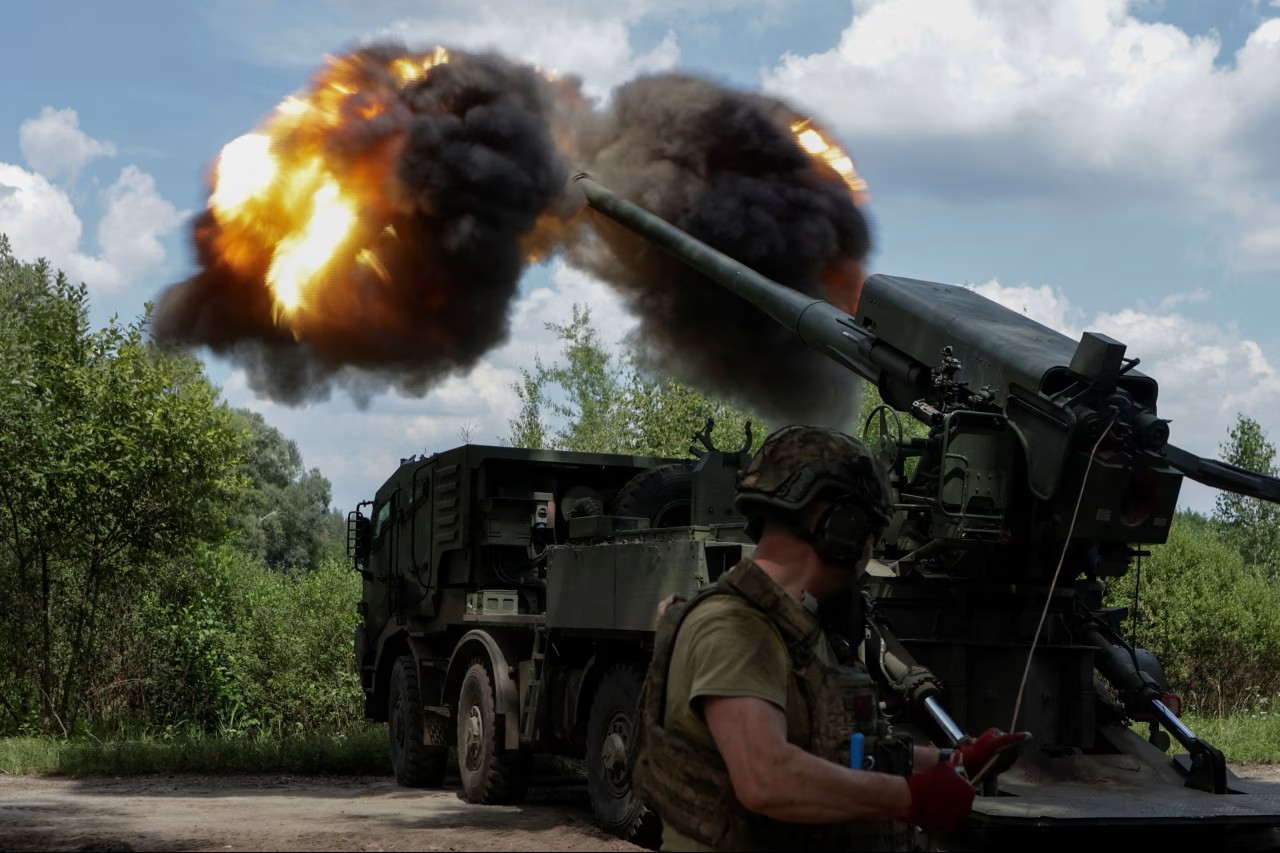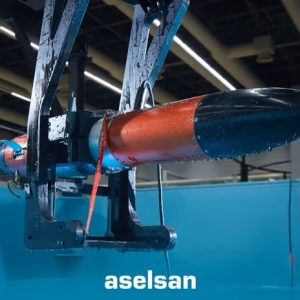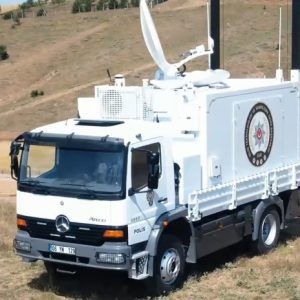Artillery in the age of drones is no longer about map grids and timed salvos. In Ukraine, ubiquitous uncrewed systems now provide near‑continuous surveillance, instant fire correction, and precision terminal guidance. This article examines how drone‑enabled sensing, targeting, and strike have transformed artillery employment—and why mobility and speed now define survivability.
From massed fires to precision cycles
At the outset of the war, artillery accounted for the majority of battlefield losses—echoing 20th‑century campaigns in which volume of fire dominated outcomes. Yet artillery in the age of drones has pivoted from attritional barrages to rapid, looped engagement cycles. Small quadcopters and fixed‑wing ISR assets spot, confirm, and adjust within minutes, collapsing the find‑fix‑finish timeline from hours to seconds.
Self‑propelled guns (SPGs) proved decisive early on. Ukrainian units executed hit‑and‑run missions around Izium and Balakliia, struck logistics hubs in the Kherson sector, and supported the defense of Bakhmut. Mobility and short “shoot‑scoot” windows kept platforms alive under counter‑battery threat. Soviet‑era systems such as Pion, Gvozdika, and D‑30 filled gaps, but the tactical center of gravity shifted as Western howitzers and precision rounds arrived.
The arrival of M777 “Triple Axes” howitzers expanded range and responsiveness, while GPS‑guided M982 Excalibur introduced meter‑class accuracy. Instead of walking fires across large areas, gun lines could prosecute high‑value targets with fewer shells, directly guided by drone feeds. The logic of economy of force—long a doctrinal ideal—became an operational necessity.
Ammunition scarcity meets affordable autonomy
By late 2022, a munition shortfall constrained both legacy and Western artillery systems. The promise of “a million shells” underscored an industrial race that could not be won overnight. Artillery in the age of drones therefore leaned into cost‑effective precision: first‑person‑view (FPV) loiterers and multirotors able to strike armor, artillery, and logistics nodes at a fraction of tube‑artillery costs.
Crucially, the affordability of drones intersects with autonomy. Guidance kits that lock onto moving or stationary targets allow terminal homing even when datalinks are jammed. For artillery, this means an expanded menu of effects: use drones to prosecute fleeting targets outright, to spot and range for guns and rockets, or to finish damaged assets before recovery.
ISR saturation and the rise of the “kill zone”
Pervasive drone ISR has created a continuously monitored battlespace. Between forward lines lies a kill zone patrolled by FPV teams and observation UAVs. Static or slow‑moving gun lines become high‑payoff targets; counter‑battery radars need only seconds of signature before drones converge. Under these conditions, artillery in the age of drones survives by compressing its timeline: arrive, fire, displace—immediately.
Rocket‑assisted projectiles may reach beyond 40 km, but moving targets at those ranges demand persistent tracking. Drones close that gap, providing real‑time visuals and dynamic updates down to the gun crews. Instead of area suppression, commanders can sequence deliberate, surgical fires against command posts, air defenses, and logistics nodes identified by overhead sensors.
Tactics and force design: what changes for artillery
These adaptations point to a broader redesign: artillery units that train routinely with UAS detachments, integrate counter‑UAS (C‑UAS) screens, and treat mobility planning as a core fires competency. The winning formula is simple but unforgiving: get to the firing position, complete the mission, pack up, and relocate—before an enemy drone or radar paints the grid.
Case cues and further context
Two Defence Agenda analyses complement this article’s findings. First, Loitering Munitions vs. CIWS explores point‑defense trade‑offs against low‑cost attackers. Second, UAV Swarms vs. SHORAD examines how short‑range air defenses are adapting to saturation tactics. Together, they map the fires–air defense interplay of the drone era.
For broader policy and capability perspectives, readers may consult NATO resources on emerging tech and defense planning, along with ongoing coverage by Reuters and Ukraine‑focused technical analysis from Defense Express.
Bottom line
Artillery hasn’t lost relevance; it has shed old habits. In the drone era, the decisive advantages are visibility, tempo, and precision—not mass alone. Units that hard‑wire drone teaming, reduce signatures, and institutionalize rapid displacement will outlast their slower peers. For Ukraine and any military studying this conflict, artillery in the age of drones is about fusing sensors and shooters into a single, fast, survivable system.
References
- Primary source: How have drones changed the role of artillery? (accessed Aug 29, 2025).
- Related analysis (internal): Loitering munitions vs. CIWS.
- Related analysis (internal): UAV swarms vs. SHORAD.
- Context hub (external): NATO official site.
- Industry reporting (external): Reuters defense coverage.
- Technical coverage (external): Defense Express.











